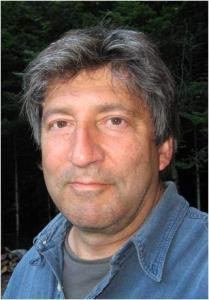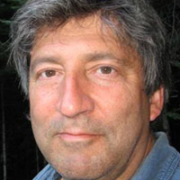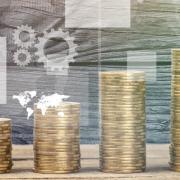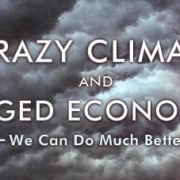Two Schools and the Path to the Steady State Economy
by Eric Zencey
 All of economics is divided into two schools: steady state theory and infinite planet theory. They can’t both be right. You’d think the choice between them would be obvious, but infinite planet theory still holds sway in classrooms and in the halls of power where policy is made. Last month, though, brought a significant development: the manager of a major hedge fund registered a carefully reasoned dissent from infinite planet theory. And in doing so, Jeremy Grantham offered a glimpse of how and why steady state economic theory will ultimately come to prevail.
All of economics is divided into two schools: steady state theory and infinite planet theory. They can’t both be right. You’d think the choice between them would be obvious, but infinite planet theory still holds sway in classrooms and in the halls of power where policy is made. Last month, though, brought a significant development: the manager of a major hedge fund registered a carefully reasoned dissent from infinite planet theory. And in doing so, Jeremy Grantham offered a glimpse of how and why steady state economic theory will ultimately come to prevail.
Grantham is the head of GMO LLC, a hedge fund with $100 billion under management. His latest letter to his investors was headlined “Time to Wake Up: Days of Abundant Resources and Falling Prices Are Over Forever”—a title that calls to mind the urgent warnings raised by steady-staters as far back as the 1970s. Those warnings were dismissed by most economists as Chicken-Little fears that could safely be ignored—and the western industrial world proceeded to do just that. Infinite planet theorists pointed to the work of Julian Simon, who argued that human ingenuity is The Ultimate Resource (as he put it in the title of a book). Since technology, a human invention, is a factor of production, and since human capacity for invention is infinite, there can be no resource limits to economic growth. Infinity times anything is infinity, right?
You can get to that conclusion only if you ignore the laws of thermodynamics. However inventive humans have been or may yet prove to be, they’ll never invent a way around the first and second law. You can’t make something from nothing and you can’t make nothing from something (the first law). You can’t push a car backwards and fill the gas tank (the second). Together these laws rule out perpetual motion, schemes in which energy is created out of nothing or recycled and used again.
In steady state theory, the economy is seen as a thermodynamic machine, drawing in matter and energy, processing them with more energy, and excreting a high entropy wake. The economy thus has two ecological footprints: one on the uptake and one on the discharge side. Since both footprints land outside the abstract world of theory and in the physical reality of a finite planet, neither can increase forever.
Economists might have put these truths into practice decades ago. Had they done so, they would have been in good company. Physics had its thermodynamic revolution in the person of Albert Einstein, whose path from Newton to relativity began with thermodynamics, as he played out the un-mechanical implications of the second law. (Mechanical motion is reversible; energy use is not.) Biology was transformed in the 1920s and 1930s, as biologists saw that evolution is driven by competition for energy, which structures and maintains ecosystems—food webs—in which sunlight becomes green plant then herbivore, carnivore, detritivore.
Why, then, has the thermodynamic revolution in economics been postponed? The question will intrigue historians of the future, who will wonder at the profligacy of our culture and our cavalier disregard for ecological limit.
Part of the answer is the bet that Julian Simon made in 1980 with population activist Paul Ehrlich. Simon maneuvered Ehrlich into wagering on the future price of any group of resources that Ehrlich cared to pick: if Simon’s theory was right, he claimed, the prices would be lower within ten years. Simon won.
His victory was widely taken as proof of his infinite planet theory, despite the obvious flaw in it. The market price of any commodity is a human construct, the result of market supply and demand, not an indicator of scarcity in any absolute sense. From a limited stock of a finite resource—oil, say—we can choose to extract the resource at a greater or lesser rate. If the rate at which we pump oil out of the ground exceeds the rate at which demand for oil increases, the market price will fall. This doesn’t prove that oil is plentiful, let alone infinite. It doesn’t prove that we’ve invented our way around the laws of thermodynamics. It merely proves that we’ve extracted oil fast enough to keep its market price from rising.
Grantham goes head-to-head with Simonism not on these theoretical grounds but with solid empirical evidence: commodity prices are rising and aren’t likely ever to come down again. Volatility in prices can be assessed by looking at change in terms of standard deviations from the mean: how big, exactly, are the swings, as measured against average variability over time? Sharp increases in the prices of significant commodities since 2002 fall well outside the standard deviation; for iron ore, the rise has been 4.9 times the standard deviation, a result that (Grantham tells us) has a one in 2.2 million chance of being “normal” variation. More likely, it signals a new and different reality. For coal, copper, corn, silver, sorghum, palladium, rubber, etc., the odds aren’t as long, but still pretty sizable: one to 48,000, one to 17,000, one to fourteen- and nine- and four thousand. This basic, deep-seated trend lies beneath the statistical noise—price spikes and troughs, including those created by speculation and subsequent “market corrections.”
Based on this analysis, and on a review of energy use that reaches back to when wood was our primary fuel, Grantham concludes that we have entered a new era: we are on the cusp of what he calls The Great Paradigm Shift, “one of the giant inflection points in economic history”—the moment, he warns, that lies at “the beginning of the end for the heroic growth spurt in population and wealth caused by…the Hydrocarbon Revolution.”
You don’t find too many economists, let alone market analysts, reaching back to look at energy use before the era of coal. In the infinite planet neoclassical model, anything before James Watt is quaint and distant, and everything before Adam Smith is simply darkness. It’s true enough that steam-driven factories, embodying the division of labor that Smith celebrated, were game changers, leading to phenomenal economic growth; but you can’t see the scope of the game, or even begin to see that it has an end, unless you put those inventions into an historical and geophysical perspective that reaches back before Watt and Smith.
That’s why the Industrial Revolution is more properly called the Hydrocarbon Revolution. In focusing on the machinery, “Industrial Revolution” leads us to think that the engine of economic growth was human invention—and thus leads to the mistaken idea that more and better invention will let us increase productivity forever. “Hydrocarbon Revolution” makes clear that the modern economic miracle has thermodynamic roots. Economic history changed when we began systematically to exploit a new stock of energy, the stored fossil sunlight of coal and oil, with its historically unprecedented rate of energy return on energy invested (EROI)—as high as 100:1 for oil in the early part of the twentieth century. “Hydrocarbon Revolution” reflects the reality that the enormous productivity gains of the machine age are rooted in that very favorable EROI. It also implicitly includes the warning that the modern economic miracle must end when this stock of thermodynamically cheap energy is used up.
The essence of steady-state thinking is that we have to shape our economy to operate on a finite planet, within a stable, sustainable budget of matter-and-energy throughput. That throughput has to be sized so that the economy’s two footprints fit into the available ecological shoes. Grantham has noticed that one of the shoes is pinching, and he’s begun to articulate the reasons why, to an audience highly motivated to listen. If they heed his warning— “From now on, price pressure and shortages of resources will be a permanent feature of our lives”—the considerable engine of self-interest will be hitched to the adoption of steady state economic theory.
If practitioners adopt steady-state principles, the economists who theorize about them can’t remain far behind.
Upton Sinclair once observed, “It is difficult to get a man to understand something when his salary depends upon his not understanding it.” In the past that logic has worked against the spread of steady-state thinking. Now the logic has turned: if you want to make money, you’d better acknowledge reality, including the reality that on a finite planet there are limits to growth. To those of us concerned about the fate of a civilization that’s outgrown its ecological niche, this is a welcome development.





One issue of particular relevance here, is that Granthams paper also says that:
” Theoretically, we all gain through global trade as China grows. But with
limited resources, the faster they grow and the richer they get (and, particularly, the more meat rather than grain that they eat), the more commodity prices rise and the greater the squeeze on the poorer countries and the relatively poor in every country.”
This means that the logic of the defenders of unfettered capitalism is also refuted, by one of the champions of it.
In addition, In the perspective of the big divide of income between the rich and the poor countries, most commodities have NOT become cheaper in the previous period either. All charts are always from the rich countries, but the reality from the perspective of the poor countries is quite different. There people still earns just 400 dollars (or considerably less) and their terms of trade have deteriorated over the century. So while gas and electricity prices have fallen for a US average worker, for large parts of the global population it has increased, which is why there is still some 2 billion without electricity..
Thanks Eric, I like your pinching shoes metaphor!
>Since technology, a human invention, is a factor of production, and since human capacity for invention is infinite, there can be no resource limits to economic growth.
Infinite planet theorists operate from a basis that is a massive logical fallacy. Human ingenuity (and, it follows, technology) are not infinite – both can only be tapped if the human body is sustained, which in turn depends on photosynthesis and biomass generated from a limited surface area of the planet.
I think perhaps the biggest obstacle facing us is the disconnect from how and where our food is produced – the ability to buy it in, from anywhere, in any season makes us forget that this whole civilisation and specialisation house of cards (including the ability to be able to debate economic theories because someone else has grown our food for the day) is only possible through agricultural surplus.
If it hasn’t happened already, I would suggest Mr Grantham should be approached and asked if he is willing to sign the CASSE position.
Cheers
Sharon
Eric,
Very interesting article. I believe though that a steady state theory doesn’t exit, yet. Do you agree? As I see it, a steady state economy means an economy with an inherent tendency to a continuous decline on profit and productive capital accumulation rates. And, that capitalism will not survive in these conditions. That is why, even with the environmental threat, opposition will always be enormous and a good theory is needed. Perhaps, a good start would be Joseph Schumpeter’s prediction that a change towards an economic system based on cooperation would happen at some point caused by capitalism itself. Unfortunately, even with a good theory and the environmental threat, it is difficult to be optimistic on how change will happen.
Chris.
Found your article very interesting and steady-state is the only way forward. Sadly though both economic models are framed in the belief the current economic system called capitalism can perpetuate itself, and that whether ecological suicide, climatic change or social conflict will never be possible. As Einstein pointed out
“We can’t solve problems by using the same kind of thinking we used when we created them.”
and current economic models are intent on sustaining the status
….quo. The root issue is not economics but brain physiology and human behaviour, and the transformations necessary in the way we think and act (and in particular don’t think and act).to innovate a new economic model that avoids markets in madness and mindless repetitive work and consumption behaviour.
The infinite planet theory is a twisted outcome of the human desire to excel and overcome limits for survival and continuation of the species. Intelligence (I) seems to be a self-reinforcing mutation, an initial mutation for intelligence has magnified itself in a short period of time. The same I that allowed humans to overcome the odds has now informed us of the planet’s limited size and limited energy flow (solar input) but this is in direct conflict with I’s evolutionary existence, so I is in denial.
There is a counterbalancing mechanism also which we call “wisdom” (W) but it is largely unmanifest and this is a mystery. It seems that W may have come into existence because of boom and bust cycles of past civilizations, but somehow I overcomes W from time to time when there is opportunity to boom, so W is kind of latent or dormant. W knows the limitations of I. W is coded in the form of a bond with nature (a spiritual connection with nature beyond its direct utility to humans that cannot be explained by I’s logic). W is capable of providing more happiness than I but still needs minimal I to maintain the physical body that is experiencing the happiness.
Einstein’s equation says motion is equal to motion in space + motion in time. You are always moving at the speed of light in spacetime. In other words, if you are stationary in space, the time is ticking at light speed or if you are moving in space at light speed, time has stopped for you and all the in-between cases. Similarly human activity is the vector sum of the two components — reproduction (population) and consumption [P + C]. It is clear from the data that where C cannot be increased, the P increase is large (developing countries) and where P is low, C is high (developed countries). Increase in P results in an increase in C, and increase in C results in an increase in P (albeit less so), so it is a viscious cycle. I is doing its job by increasing P and C. W needs to be awakened on a massive scale to take control fo I and stop P and C’s unsustainable growth.
Besides the view of “infinite planet” theory, there is the psychological view of comfort zones and schema. While environmental limits are still not sufficiently accute, those of us with ecological awareness are faced with an essential challenge to maintain clear and compelling messages of existing realities and impending problems to ultimately allow larger numbers of people to perceive the real limits themselves. The advertising industry and current states of consumer consciousness are not helping. John K. Galbraith was writing about the issue of corporate control of various channels, as did Thorstein Veblen even earlier.
I hope infinite planet folks will study some psychology and publicity techniques, because we need to keep images vivid and clear that problems like global warming are urgent like droughts in the Western and SE US, and melting snowpack in the Rockies, and not just in the Himalayas, for example. Then, we need to refer to efforts like the Maryland solar co-ops which are advancing renewable energy use in partnership enterprises that create consumer-producers and shift to decentralized energy.
Then people like Julian Simon will find the object of their attention on a market that has been created out of psychosocial economic strategy, logic, and action.
So, just yesterday I was having basically this same conversation with representatives of my state’s transportation agency, about a traffic-congested corridor, and their first, favorite option has been to widen the expressway so more cars can fit on it.
It wasn’t until many of us citizens carried on long and loudly enough that they began to consider other options (trains, bikes, buses, and –shudder!–walking). Now we keep having to show up at meetings to remind them to stop planning for the past and start planning for our less-than-infinite future.
Glad to see Jeremy Grantham gets it. One question, however, is how persons like himself will find a way to profit and preserve their wealth and lifestyles at the expense of the rest of us. I don’t see those folks voluntarily consuming less, or actually living under steady-state constraints.
One fundamental reason why a clear and present reference to existing green lifestyles is necessary is to not to succumb to stereotyped thinking. To assume that a steady state economy is going to be the equivalent of a hardy organic farm with a single solar panel, microwind turbine, and a cow is stereotyped thinking.
The amount of sunlight incident to the earth’s system suggests that renewable energy technologies, along with green chemistry and recycling systems, can maintain a high level of technological living under sustainable conditions.
Current usage patterns and throughputs are being conducted unsustainably, and many reductions as such are and may be necessary. However, green equivalents are dynamic in their own right. Pepsi and Whole Foods Markets have gone 100% green energy, for example. Steaz is a soda that has fair trade and organic ingredients. Could these usages converge and create a steady state model businesses (qmark). It seems likely, I think.